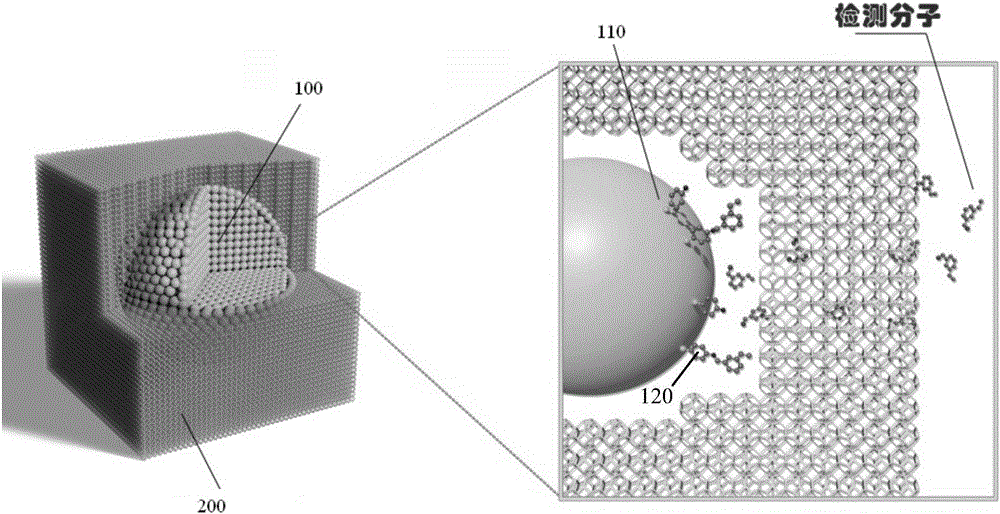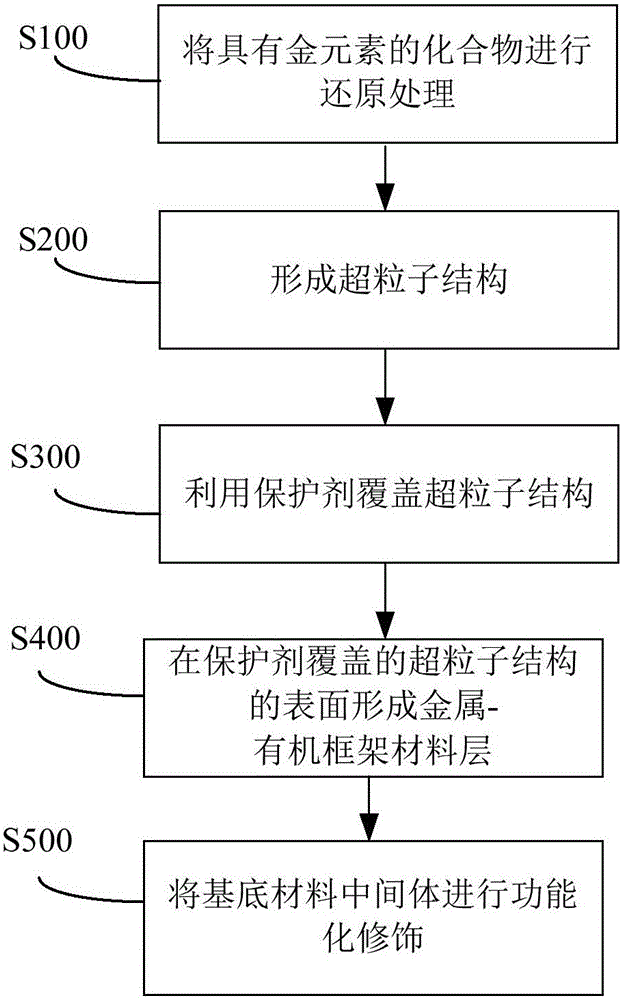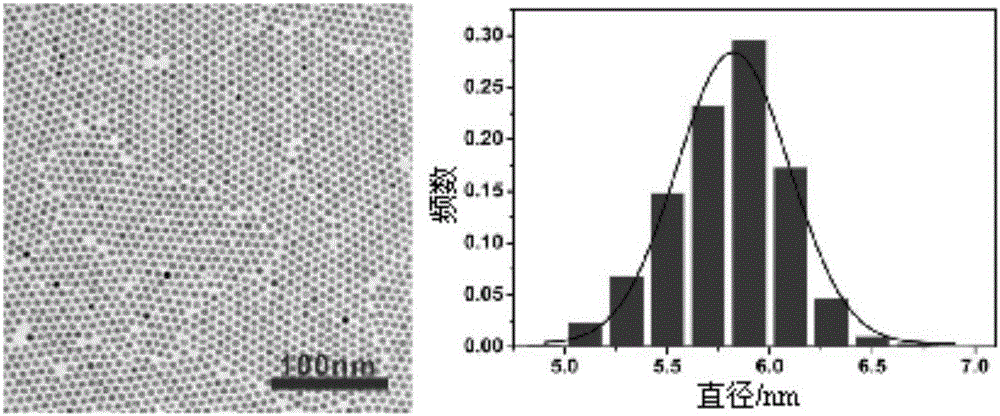Surface enhanced Raman scattering substrate material and preparation method thereof
A surface-enhanced Raman and substrate material technology, applied in Raman scattering, material analysis, material excitation analysis, etc., can solve the problems of SERS repeatability and stability, difficult to achieve gas detection, difficult quantitative detection, etc., to achieve SERS Enhanced, highly reproducible, and easy-to-operate effects
- Summary
- Abstract
- Description
- Claims
- Application Information
AI Technical Summary
Problems solved by technology
Method used
Image
Examples
preparation example Construction
[0074] Here, according to an embodiment of the present invention, the present invention further provides a method for preparing a functionalized modified SERS substrate, comprising the following steps:
[0075] (1) Preparation of a uniform SERS substrate: Mix the core-shell structure material with a solvent to form a suspension, drop the suspension onto a clean square monocrystalline silicon wafer of known size, and slowly evaporate the solvent in its solvent atmosphere , to get the SERS substrate.
[0076] Among them, the solvent is water or ethanol; the concentration of the suspension can be 20mg / mL~50mg / mL; the size of the silicon chip can be adjusted according to different detection requirements, and according to the embodiment of the present invention, the size of the silicon chip can be 0.2cm*0.2cm ~1cm*1cm, specifically 0.3cm*0.3cm, 0.5cm*0.5cm or 0.9cm*0.9cm.
[0077] (2) Functional modification of the SERS substrate: soak the SERS substrate in an ethanol solution of ...
Embodiment 1
[0098] The steps of preparing the SERS base material using the method of the embodiment of the present invention are as follows:
[0099] (1) Preparation and TEM characterization of monodisperse nanoparticles:
[0100] Dissolve 100mg of chloroauric acid in a mixed solvent of 10mL oleylamine and 10mL hexane, dissolve 43.5mg of borane-tert-butyl complex in a mixed solvent of 1mL oleylamine and 1mL hexane, and then quickly inject In chloroauric acid solution, react at 10°C for 1h. After the reaction was completed, 40 mL of ethanol was added and centrifuged to obtain monodisperse gold nanoparticles.
[0101] The morphology and particle size distribution of the gold nanoparticles obtained above were analyzed and detected, and the particle size distribution results are shown in 3, as shown in the figure, the left figure is a TEM picture of gold nanoparticles, and the right figure is a particle size distribution figure. The results show that, The nanoparticles are evenly distribute...
Embodiment 2
[0114] The steps of preparing the SERS base material using the method of the embodiment of the present invention are as follows:
[0115] (1) Preparation and TEM characterization of monodisperse nanoparticles:
[0116] Dissolve 100mg of chloroauric acid in a mixed solvent of 10mL oleylamine and 10mL hexane, dissolve 21.7mg of borane-tert-butyl complex in a mixed solvent of 2mL oleylamine and 2mL hexane, and then quickly inject In chloroauric acid solution, react at 18°C for 1h. After the reaction, 40 mL of ethanol was added and centrifuged to obtain monodisperse nanoparticles. The TEM characterization results of the nanoparticles were consistent with those in Example 1.
[0117] (2) Preparation and TEM characterization of superparticles:
[0118] Re-dissolve the gold nanoparticles in chloroform to obtain 10 mg / mL gold nanoparticle colloid, dissolve 20 mg of dodecyltrimethylammonium bromide in 1 mL of ultrapure water, and mix the gold nanoparticle colloid with ten Aqueous ...
PUM
| Property | Measurement | Unit |
|---|---|---|
| diameter | aaaaa | aaaaa |
| thickness | aaaaa | aaaaa |
| concentration | aaaaa | aaaaa |
Abstract
Description
Claims
Application Information
 Login to View More
Login to View More - R&D
- Intellectual Property
- Life Sciences
- Materials
- Tech Scout
- Unparalleled Data Quality
- Higher Quality Content
- 60% Fewer Hallucinations
Browse by: Latest US Patents, China's latest patents, Technical Efficacy Thesaurus, Application Domain, Technology Topic, Popular Technical Reports.
© 2025 PatSnap. All rights reserved.Legal|Privacy policy|Modern Slavery Act Transparency Statement|Sitemap|About US| Contact US: help@patsnap.com



